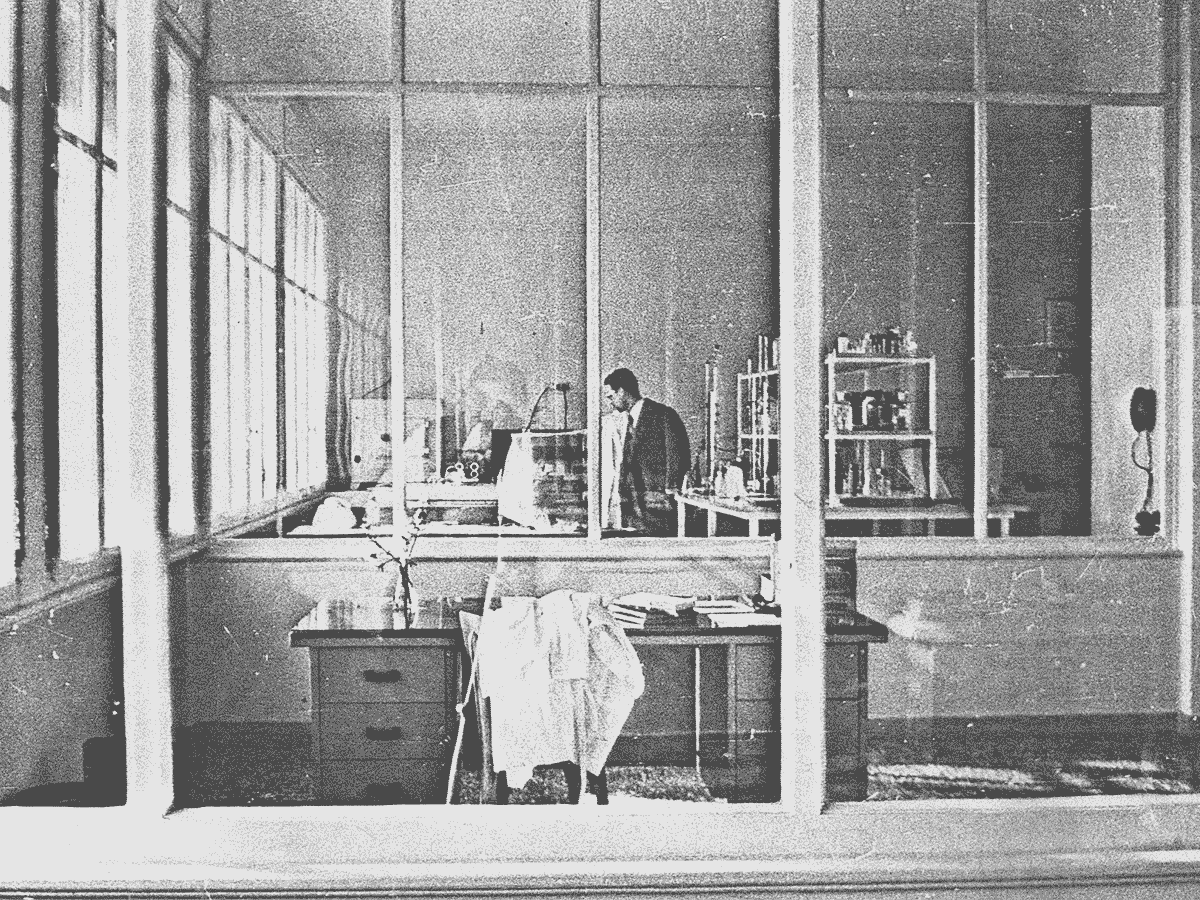OGS history from 1958 to 1999.

On the basis of law N. 73 (link to pdf 580211_73_Legge_OGS), the Observatory takes the name of Applied Geophysical Observatory of Trieste and is recognised as a Public Body, subject to the control of the Ministry of Public Education. The first president of the Institute was Prof. Carlo Morelli.
The Observatory is divided into sections: Seismic, Gravity and Magnetism, Geoelectric and Geochemistry, Radioactivity and Geothermal, Sea, Laboratories, Workshop, Car Park, Custody and Cleaning. Staff: 85 people (including permanent and contract staff). The head office is located in Viale Romolo Gessi 4.
The first issue of the Bulletin of Theoretical and Applied Geophysics is published.
As part of the World Wide Standard Seismic Network (WWSSN), the new seismographic station TRI 117 is installed at the bottom of Grotta Gigante.
The collaboration with the International Bathymetric Chart of the Mediterranean (IBCM) continues with a series of bathymetric, geomagnetism and gravity cruises on the ship "Bannock" of the National Research Council (CNR). The programme ended in 1972 with 217,000 km covered.
Law No. 1243 amends two articles of Law 73/1958.
In the same year, the new building for the Seismology and Seismic Sections, the Guest House and "Capannone C" (now building "D") is built in Borgo Grotta Gigante 42c. (now building "D"), near the Grotta Gigante and the seismographs.
The Marine Laboratories building is built in via Ottaviano Augusto 9 in the port area.
It becomes the site of the Physical and Chemical Oceanography Section, the Electronic Laboratories and the Workshop.
Buildings 'A' and 'B' are constructed at Borgo Grotta Gigante 42/c.
A new warehouse is built in Borgo Grotta Gigante on the site of the current Building "E".
With the aim of developing seismic prospections, a data processing group of the OGS is established at the University of Bari, where the new IBM-360 computer is available. The collaboration continued until 1972, when the group moved to the University of Padua, which had just acquired an IBM-370. The group remained detached in Bari until 1978.
On the initiative of Dr. Ezio Accerboni, the Calibration Centre for Oceanographic Instruments of the Marine Laboratories (CTLM) is established.
First geophysical campaign at the Svalbard Islands in the Arctic.
Controversy between staff and presidency, with strikes and occupation of the offices.
After the dismissal of the president, Dr. Franco Puppi is appointed government commissioner who then becomes president until 24 June 1977.
Earthquake in Friuli of magnitude 6.4 (TRI seismographic station). Repeats of the earthquake last more than a year. The OGS intervenes with a mobile seismic station to integrate the existing seismographs and immediately monitor the seismic swarm.
The Friuli Venezia Giulia Seismological Network is inaugurated. The recording equipment is housed in the Casa della Contadinanza, adjacent to Udine Castle, and the foundations are laid for the Udine Seismological Centre.
Decree no. 667 of the President of the Republic states that the Observatory is necessary for the economic, civil, cultural and democratic development of the country and is included in category VI of the table of Research and Experimentation Bodies attached to Law no. 70 of 20 March 1975.
The Observatory is divided into Organisational Units: Marine Laboratories, Non-Seismic Methodologies, Technical Services, Seismology.
The new President is Prof. Antonio Brambati.
OGS is reorganised into 6 Organisational Units (O.U.) of which 4 are scientific (Marine Laboratories, Non-Seismic Methodologies, Seismics, Seismology) and 2 are general support units (Administrative Services and Technical Services).
Prof. Fabio Rocca was appointed as the new president, and in the same year the Hotel Cristallo in Borgo Grotta 36 was acquired and the Administrative Services were transferred there.
The new president is Prof. Cesare Roda.
The R/V Explora is acquired from RIG-Prakla and the first geophysical cruise in Antarctica begins.
Law n.168 establishes the Ministry of Universities and Scientific and Technological Research.
Law n.399 sets out the regulations for the reorganization of the Applied Geophysical Observatory and establishes its institutional tasks and legal framework as a Non-Instrumental Research Body (art.8 law 9.05.1989 N.168) under the supervision of the Ministry of University and Scientific Research.
The regulations are drawn up by the Board of Directors, supplemented by four representatives elected by the OGS staff in service (art. 15).
The new "Regulation on the OGS Organs" and the "Regulation on the Organisation and Functioning of the OGS Structures" are issued, with which the Institution is divided into three Departments: "Geophysics of the Lithosphere" GDL, "Oceanology and Environmental Geophysics" OGA and "Udine Seismological Research Centre" CRS, plus the Administration and the Technical Service Structures (Library and Publishing Centre, Computing Centre, Car Park and Warehouse).
Capannone C was renovated to become the headquarters of the GDL Department.
The organisation's registered office is moved to Borgo Grotta Gigante 42c (G.U. 19.05.1995).
The new president is Prof. Rinaldo Nicolich.
The "Magazzino-Autoparco" is renovated into building "E" with laboratories and offices.
The term of office of the President, Prof. Rinaldo Nicolich, expires after the 40 days prescribed by law, and on 13 February the Institution is left without a President. The management of the Institution was continued by the Board of Directors and Director Dr. Ezio Accerboni.
